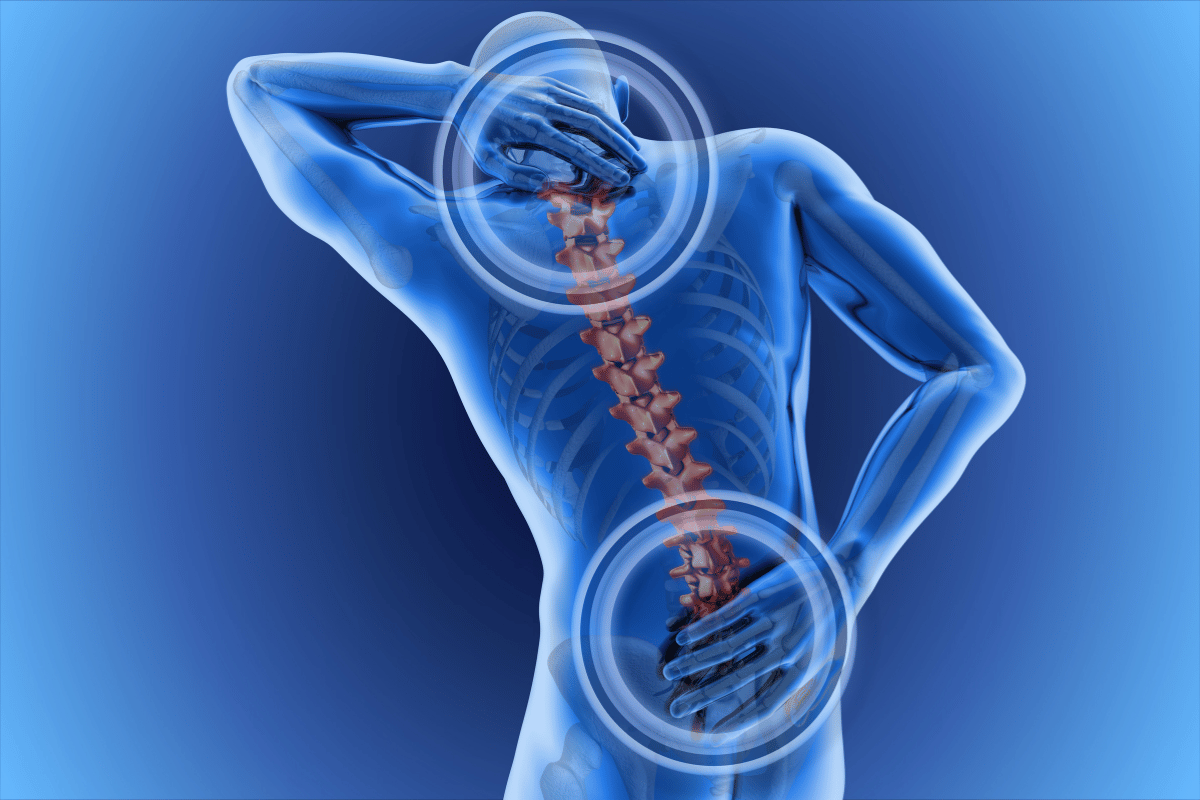Exploring Disc Desiccation: Causes, Symptoms, Treatments, and Relief

Ever wondered why your back feels like it’s carrying the weight of the world sometimes? It might be a disc desiccation. Imagine your spinal discs as tiny cushions that keep your vertebrae from clashing into each other. Now, picture those cushions losing their bounce – that’s disc desiccation. It’s a fancy term for the drying out of these discs, leading to all sorts of back woes.
Table of Contents
ToggleUnderstanding Spinal Discs
Structure of Spinal Discs
Let’s take a deep dive into your spine. Spinal discs are like jelly-filled doughnuts between your vertebrae. Each disc has a soft, gel-like center called the nucleus pulposus, surrounded by a tougher exterior known as the annulus fibrosus. These discs act as shock absorbers, making sure every move you make is smooth and pain-free.
Function of Spinal Discs
These discs aren’t just there for show. They allow your spine to bend, twist, and flex without any hiccups. They also absorb the impact of daily activities like walking, running, and lifting. Essentially, they’re the unsung heroes keeping your spine in top shape.
Causes of Disc Desiccation
Natural Aging Process
Like it or not, aging happens to the best of us. As we get older, our discs naturally lose water content. Think of it like a grape turning into a raisin – it’s a part of life’s natural cycle. This loss of hydration is a significant cause of disc desiccation.
Injury And Trauma
Ever taken a nasty fall or had a car accident? Injuries can accelerate the desiccation process. Trauma to the spine can damage the discs, speeding up their degeneration and drying out.
Lifestyle Factors
Your daily habits play a huge role too. Smoking, poor diet, and lack of exercise can all contribute to disc desiccation. It’s like how a plant withers without proper care – your discs need a healthy lifestyle to stay hydrated and strong.
Symptoms of Disc Desiccation
Chronic Back Pain
One of the first red flags of disc desiccation is persistent back pain. It’s that nagging pain that just won’t quit, making even simple tasks feel like a Herculean effort.
Reduced Flexibility
Feeling stiff as a board? Disc desiccation can rob you of your flexibility, making it tough to bend or twist. It’s like your spine has lost its mojo.
Numbness And Tingling
Sometimes, disc desiccation can pinch the nerves in your spine, causing numbness or a tingling sensation in your arms or legs. It’s a clear sign that something’s off with your back.
Diagnosis of Disc Desiccation
Medical History And Physical Examination
Your doctor will start with your medical history and a physical exam. They’ll ask about your symptoms, lifestyle, and any injuries. This helps paint a picture of what’s going on with your spine.
Imaging Tests
To get a clearer view, imaging tests like MRI or CT scans are often used. These tests show the state of your spinal discs in detail, revealing any signs of desiccation.
Treatment Options For Disc Desiccation
Conservative Treatments
Most cases of disc desiccation can be managed with conservative treatments. This includes lifestyle changes, exercises, and over-the-counter pain relievers. It’s all about keeping things simple and effective.
Physical Therapy
A physical therapist can guide you through exercises designed to strengthen your back and improve flexibility. It’s like having a personal trainer for your spine.
Medications
Sometimes, medication is necessary to manage pain and inflammation. Your doctor might prescribe anti-inflammatories, pain relievers, or muscle relaxants to help you cope.
Surgical Interventions
In severe cases, surgery might be required. Procedures like spinal fusion or disc replacement can provide relief when other treatments haven’t worked. It’s a last resort, but sometimes it’s the best option.
Preventing Disc Desiccation
Healthy Lifestyle Choices
Want to keep your discs happy? Start with a healthy lifestyle. Eat a balanced diet, stay hydrated, and avoid smoking. It’s the basic recipe for keeping your spine in good shape.
Ergonomic Practices
How you sit, stand, and move matters. Use ergonomic furniture, maintain good posture, and lift objects properly. It’s like giving your spine a VIP treatment every day.
Living With Disc Desiccation
Managing Pain
Living with disc desiccation means managing pain effectively. This could involve a combination of medications, physical therapy, and lifestyle changes. It’s all about finding what works for you.
Staying Active
Don’t let disc desiccation turn you into a couch potato. Staying active is crucial. Gentle exercises like walking, swimming, or yoga can keep your spine flexible and reduce pain.
Mental Wellbeing
Chronic pain can take a toll on your mental health. Stay connected with friends and family, consider therapy, and find activities that make you happy. Your mind needs care just as much as your body.
Conclusion
Disc desiccation might sound intimidating, but with the right approach, you can manage it effectively. Understanding the causes, symptoms, and treatment options is the first step towards a healthier, pain-free life. Stay proactive, make healthy choices, and don’t hesitate to seek professional help when needed. Your spine will thank you!
FAQs
1. Can disc desiccation be reversed?
Unfortunately, disc desiccation can’t be reversed, but its symptoms can be managed with proper care and treatment.
2. Is disc desiccation the same as a herniated disc?
No, disc desiccation is the drying out of the disc, while a herniated disc involves the nucleus pulposus pushing through the annulus fibrosus.
3. Can young people get disc desiccation?
While it’s more common in older adults, young people can develop disc desiccation, especially due to injury or poor lifestyle choices.
4. How long does it take to recover from disc desiccation surgery?
Recovery time varies but typically ranges from a few weeks to several months, depending on the specific procedure and individual factors.
5. Are there any exercises to avoid with disc desiccation?
High-impact activities and heavy lifting should be avoided. Focus on low-impact exercises like walking, swimming, and gentle stretching. Always consult with a healthcare professional before starting any exercise regimen.
Published by Amanda Mills
Amanda Mills is a seasoned digital marketer and accomplished content writer, known for her dynamic approach to creating engaging and impactful digital content. With over a decade of experience in the industry. View more posts







